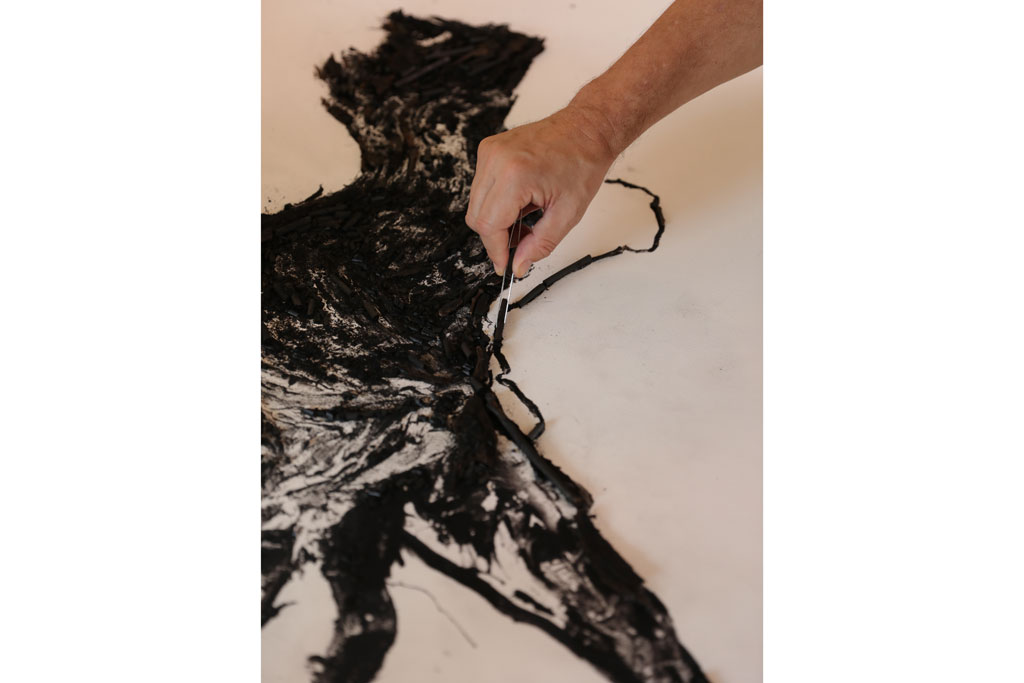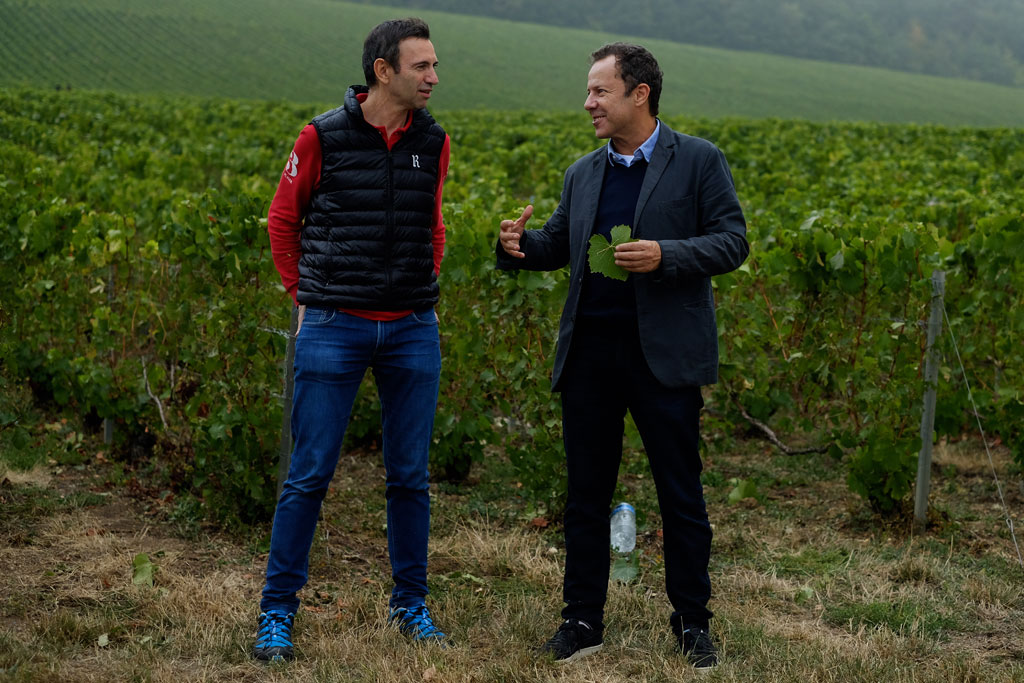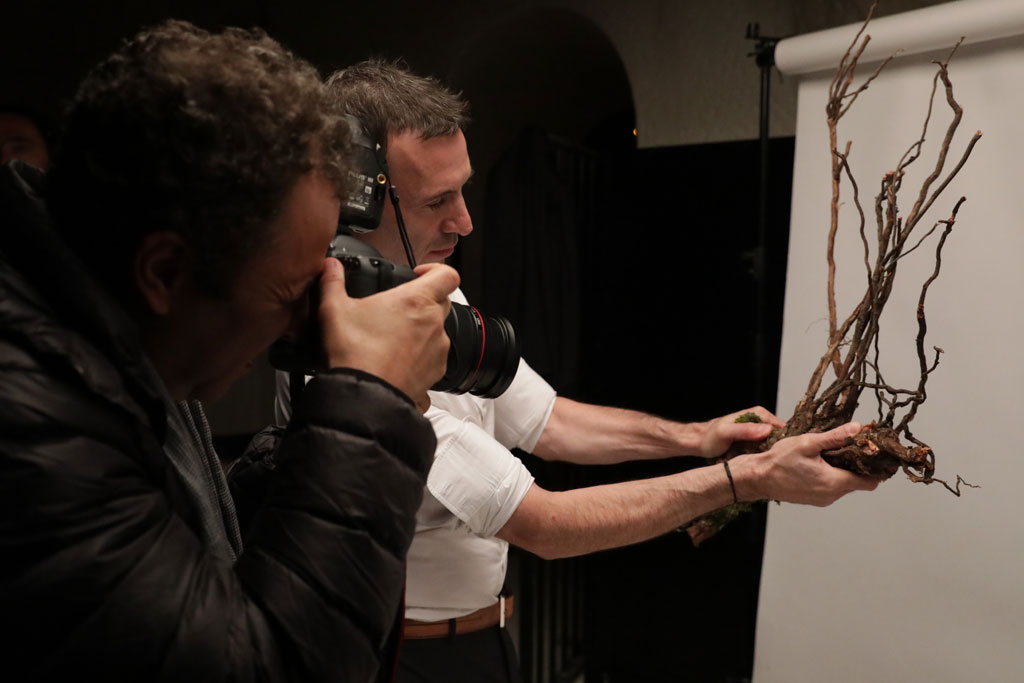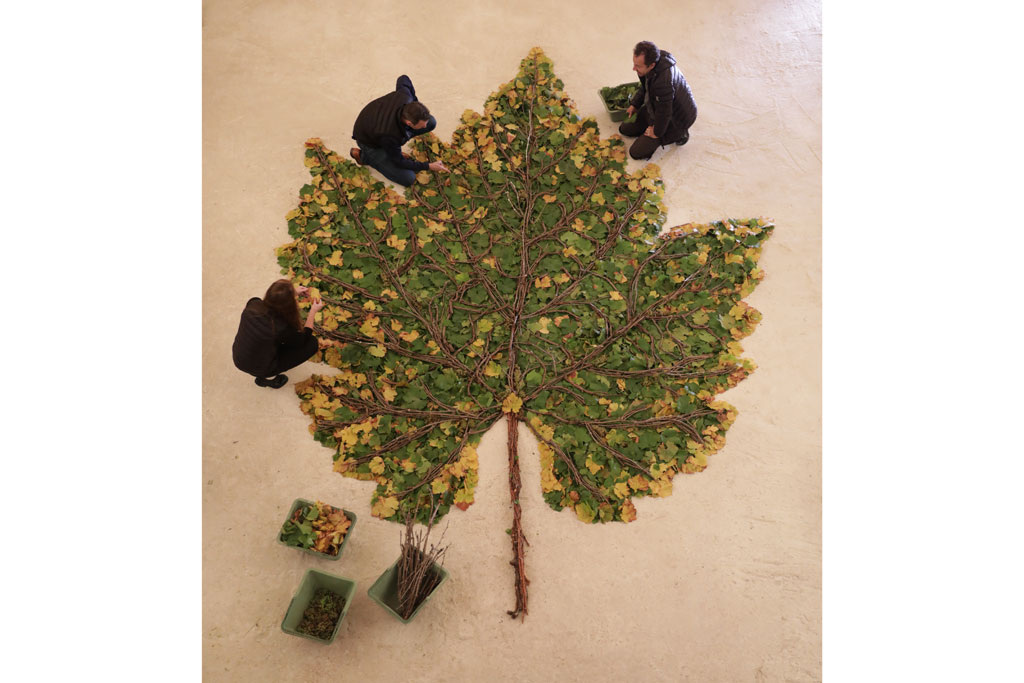On the Grapevine
Caiti Grove meets Brazilian artist Vik Muniz, whose latest body of work was inspired by time spent in Ruinart's vineyard.
This post may contain affiliate links. Learn more
The trickiest thing about art,’ says Vik Muniz, ‘is to produce things that interest both the museum director and the person who cleans it. It’s very easy to impress erudite people – it’s just names and a complex theory. You have to actually tell lay people how it’s made. To get both of these groups and then find out what works in the middle, takes more work.’
His past collaborations include working with a genetic biologist, a micro-photographer and with Guerlain, the parfumier. ‘I’m a student, I’m interested in things that I have no idea about – like wine making… why not?!’ This year at Frieze, he will unveil his collaboration with Ruinart. Huge pictures of knobbly branches, they look like intricate line drawings, but are actually photographs of collaged bark collected from the champagne’s vineyards.
‘Picasso declared the French to be a nation of peasants – their rural tradition keeps things in perspective. They are so advanced technologically but think about food in a very traditional way, and advance those two things in parallel.’
A true urbanite, Muniz was 14 when he first saw a cow, and 30 before he learned the name of a tree. Growing up in São Paulo, his own parents’ first visit to a museum was to see his work. His change in fortune happened in the most bittersweet of circumstances. Working in advertising, Muniz designed billboards to catch the eye of passing drivers.
After winning an award for his work, a perspex trophy in his hands, he spotted a fight between two executives. He intervened to stop it, but as he was walked away, the victim pulled out a gun and tried to shoot his aggressor. Instead, he hit Muniz in the leg. Accepting wrongdoing, he offered the wounded Muniz money to avoid him pressing charges. With it, Muniz bought a ticket to New York and began his spectacular career on the proceeds.
The documentary Wasteland follows his three-year project in Rio at the Jardim Gramacho, the biggest landfill in the world, to make pictures of litter-pickers out of the materials they work with every day. Discarded household waste arranged into huge images reminiscent of Biblical stories, they were then photographed and scaled down to reveal subtle details of the subjects’ expressions and the folds in their headdresses. The subjects of the work saw their images sold at auction for hundreds of thousands of dollars, fortunes they were given to change their lives beyond recognition.
A career that has explored sociological issues and the commercial world, he insists that ‘art doesn’t happen until there’s someone in front of it. Art is not done in the studio. It has to come to a place, to a museum. It’s an exchange. More than making art, I love to look at someone looking at the things I make’.
Vik Muniz’s work will be exhibited at Frieze, 3-6 October; frieze.com
READ MORE:
What’s On at the Tate in 2019 / Conversations at Scarfes Bar: Caroline Coon




